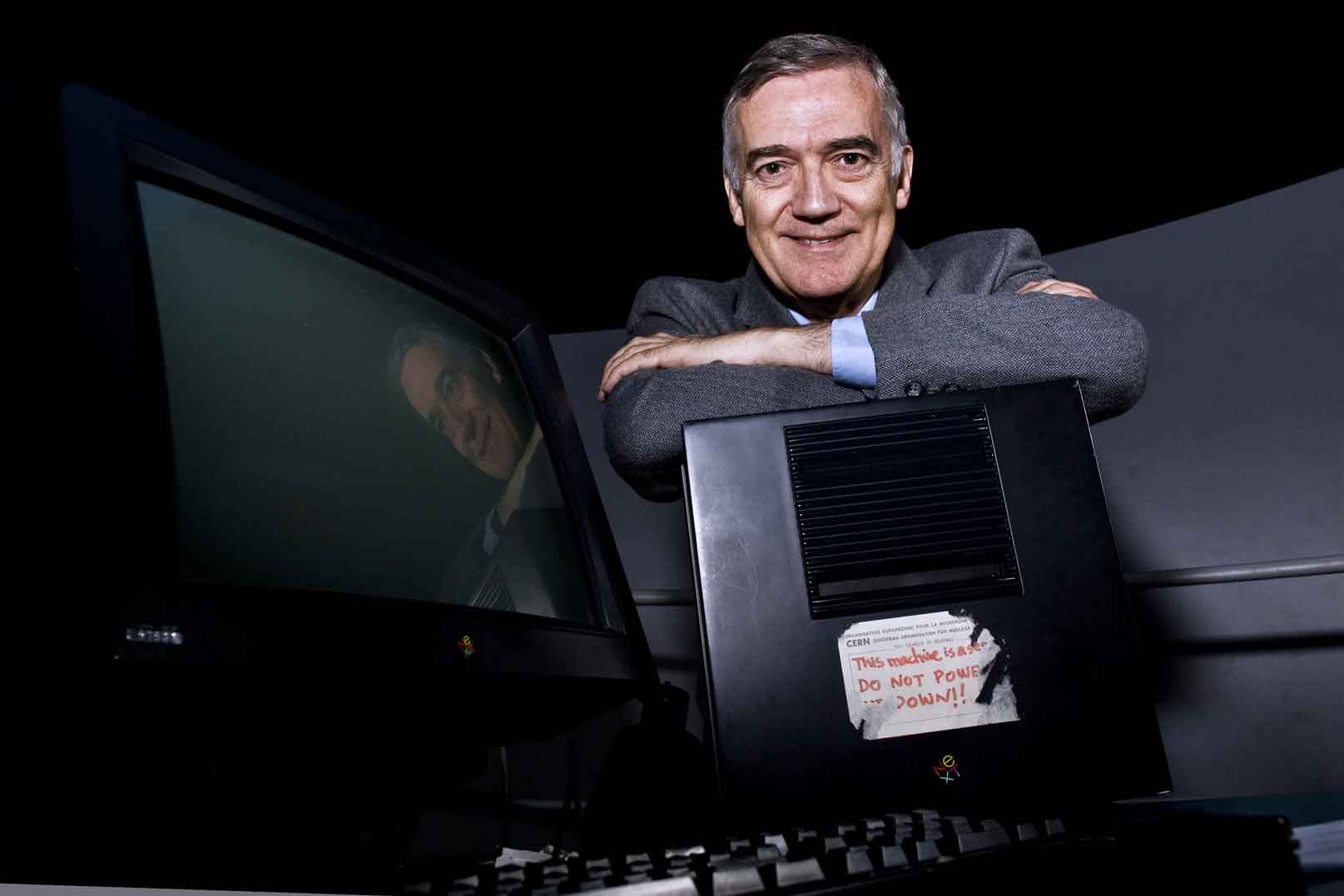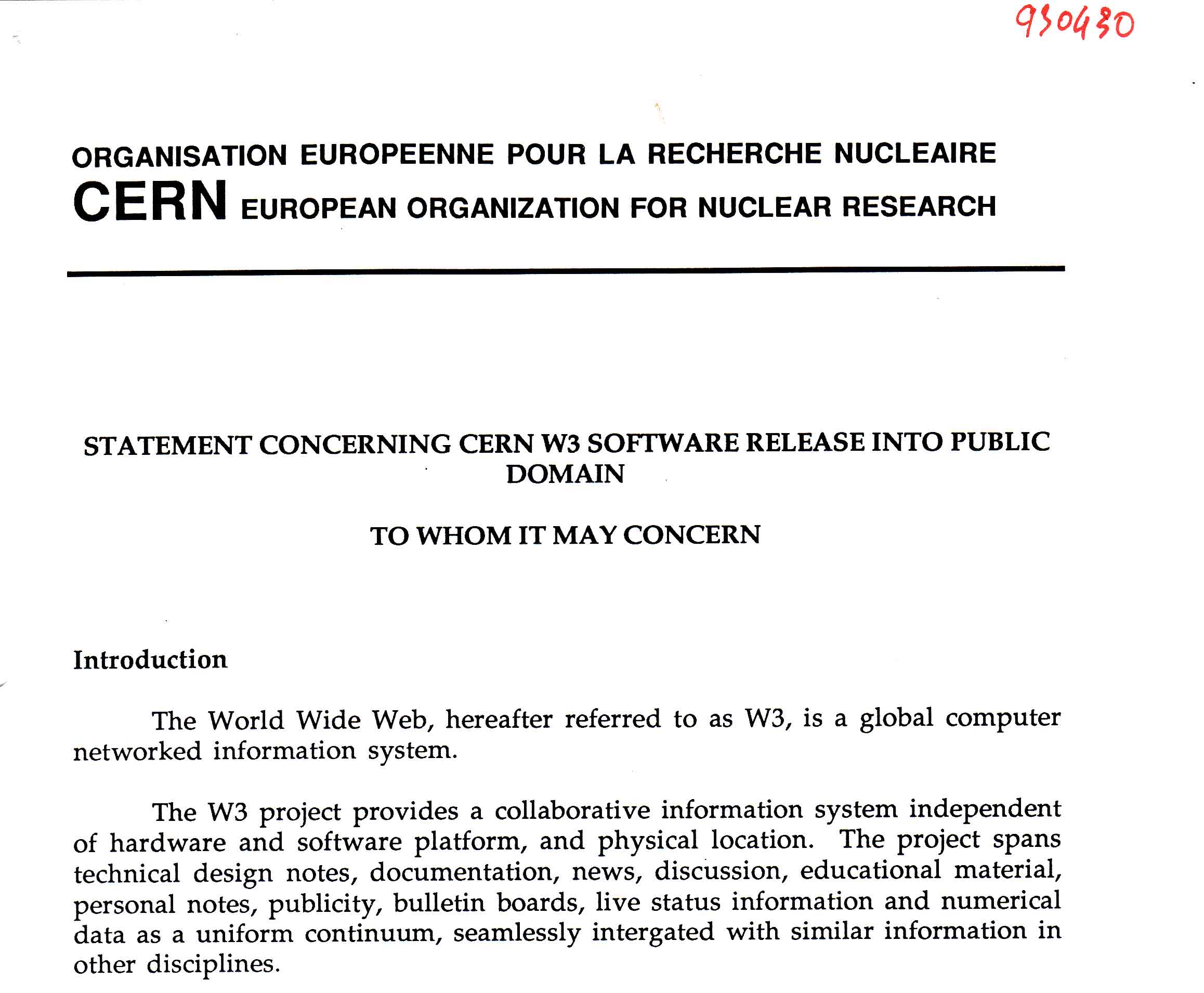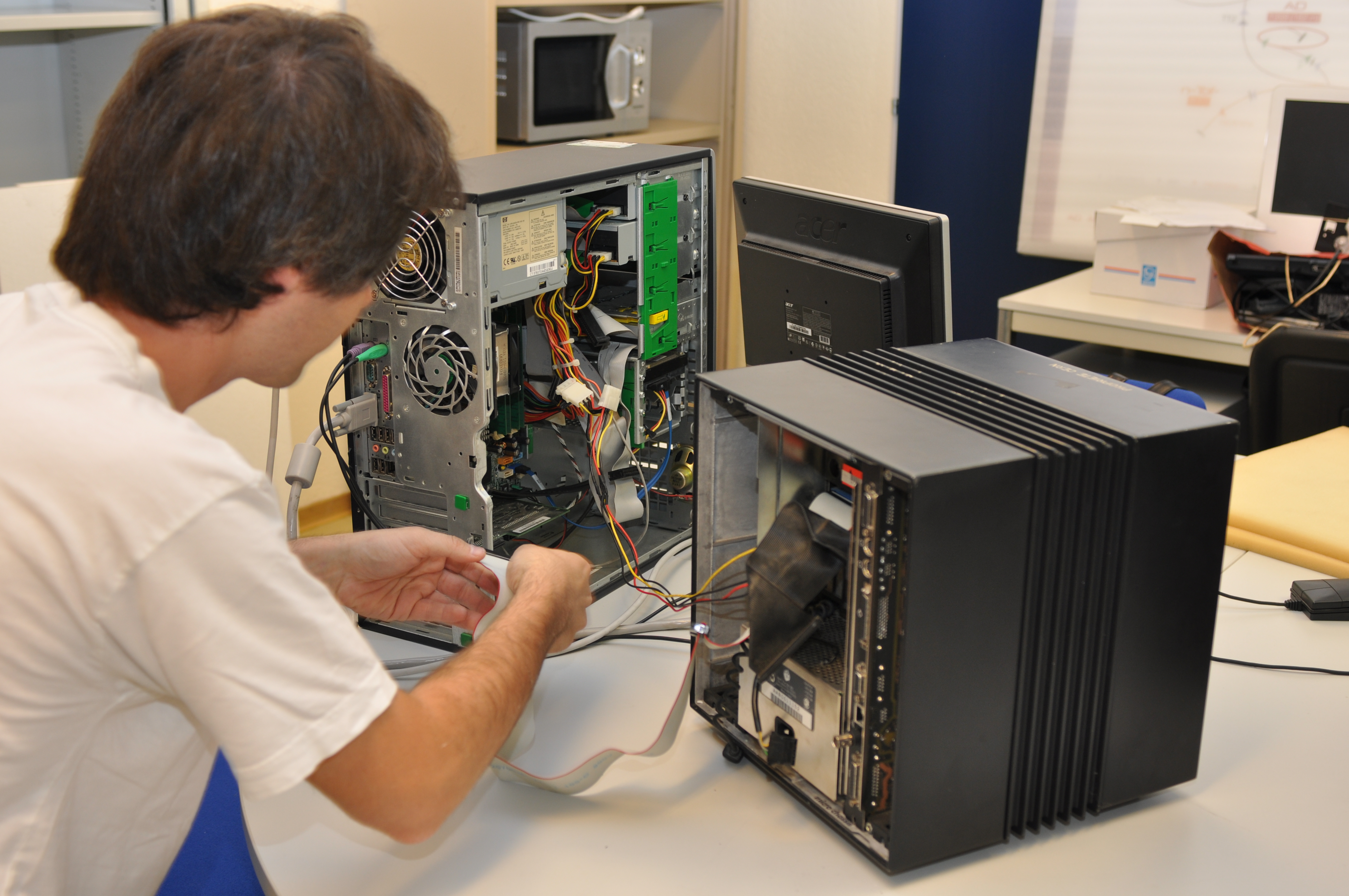Topic
The birth of the web
Tim Berners-Lee, a British scientist at CERN, invented the World
Wide Web (WWW) in 1989. The web was originally conceived and developed
to meet the demand for automatic information-sharing between scientists
in universities and institutes around the world.
The first website at CERN - and in the world - was dedicated to the World Wide Web project itself and was hosted on Berners-Lee's NeXT computer. The website described the basic features of the web; how to access other people's documents and how to set up your own server. The NeXT machine - the original web server - is still at CERN. As part of the project to restore the first website, in 2013 CERN reinstated the world's first website to its original address.
On 30 April 1993 CERN put the World Wide Web software in the public domain. CERN made the next release available with an open licence, as a more sure way to maximise its dissemination. Through these actions, making the software required to run a web server freely available, along with a basic browser and a library of code, the web was allowed to flourish.



Voir en français
The first website at CERN - and in the world - was dedicated to the World Wide Web project itself and was hosted on Berners-Lee's NeXT computer. The website described the basic features of the web; how to access other people's documents and how to set up your own server. The NeXT machine - the original web server - is still at CERN. As part of the project to restore the first website, in 2013 CERN reinstated the world's first website to its original address.
On 30 April 1993 CERN put the World Wide Web software in the public domain. CERN made the next release available with an open licence, as a more sure way to maximise its dissemination. Through these actions, making the software required to run a web server freely available, along with a basic browser and a library of code, the web was allowed to flourish.

The first website
Discover the World Wide Web’s humble beginnings with this earliest incarnationBrowse the first website

Restoring the first website
The web team at CERN are working to preserve some of the digital assets that are associated with the birth of the webRead about the restoration project

The line-mode browser
The line-mode browser, launched in 1992, was the first readily accessible browser for the World Wide WebLaunch the simulator or read about how the simulator was developed
Featured updates on this topic
Updates
In March 1989
Tim Berners-Lee wrote a proposal to develop a radical new way of linking
and sharing information: the World Wide Web
Twelve
talented web developers have travelled to CERN from all over the world
to recreate a piece of web history: the line-mode browser
CERN is organizing a two-day coding event to recreate the line-mode browser
The inaugural
Queen Elizabeth Prize for Engineering went to five engineers whose work
led to the internet and the World Wide Web
Twenty-one
years ago this month, physicists at the Stanford Linear Accelerator
Center (SLAC) installed the first web server outside of Europe




No comments:
Post a Comment